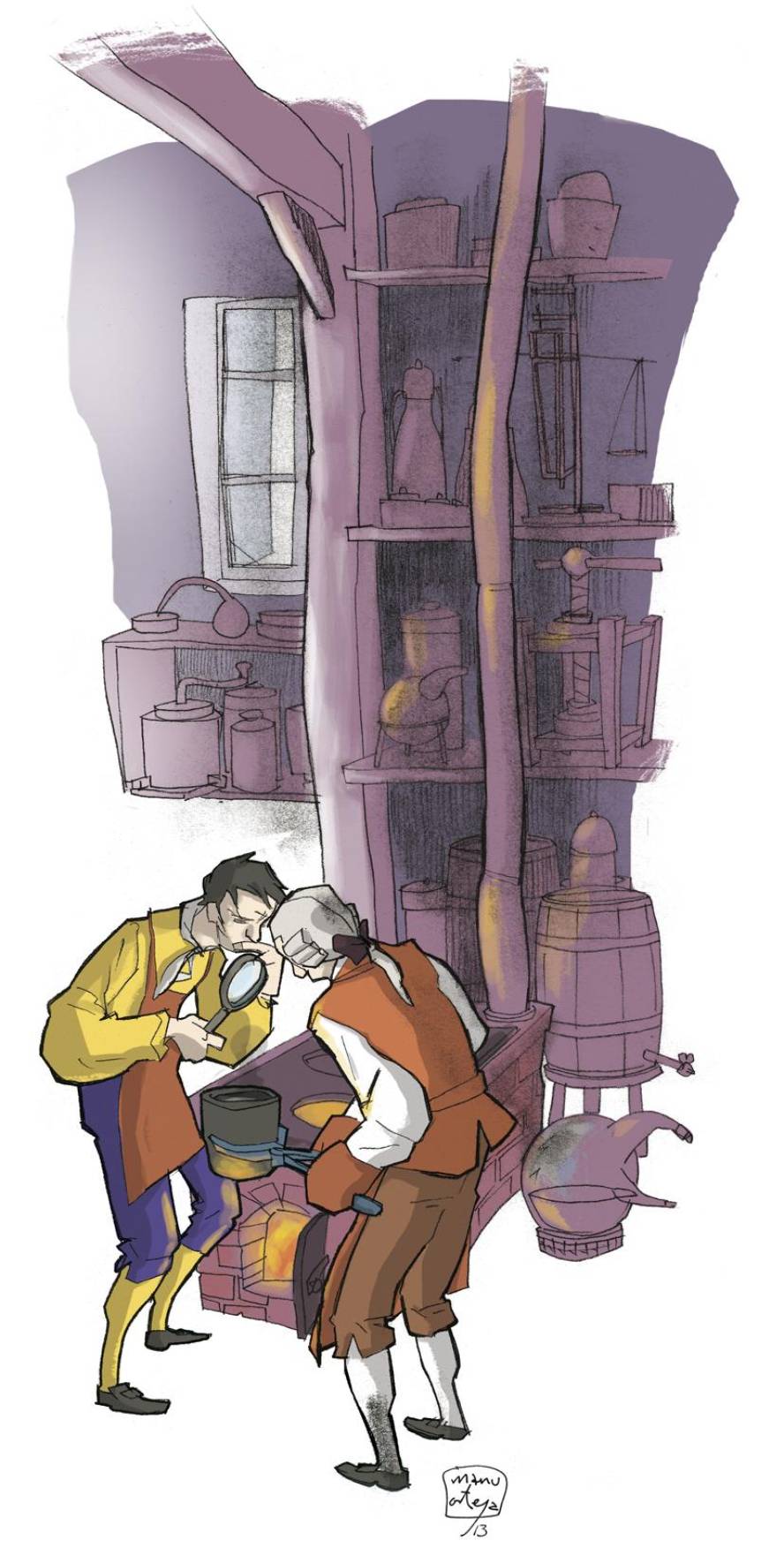Elhuyar brothers, better scientists than spies
In a letter they passed the mission in thirteen points:
1. Always remember the desire to keep the true goal of the trip secret.
2. As soon as possible, [...]
10. From Sweden to the Scottish factories of Carrón, and for its admission, simulate its German character and ex officio. To do this, it will be important to learn German well during your stay in Germany.
11. When you go to Scotland, agree on the letter relationship with a trusted person from Paris, who will know that you will have to send the German letters to Spain. Introduce phrases in Basque in any context written in German in the letters, in a concealed way, and with them you will know what you really want to communicate. [...]
The letter was received in February 1778 by Juan José Elhuyar, Count of Peñaflorida. Demand came from Madrid. Carlos III's Minister of the Navy, the Marquis of Tudela, González Castejón, wanted technology to make cannons of his British rivals. They manufactured the best cannons in the world, especially in Carron (Scotland). The minister wanted to send a couple of spies and asked Bilbao friend José Domingo Mazarredo for help to find people with sufficient technical knowledge for the mission: "Vizcaínos and vizcainas are capable of everything and very appropriate for this: silences, skilful and workers."
Macarredo took the opportunity to speak to the minister about the Real Sociedad Bascongada de Amigos del País. At the Bergara Seminar the installation of a chair of mineralogy and metallurgy was planned with the best specialists from Saxonia and Sweden. Another option could be to take young people to the best centers in Europe and then bring to Bergara what had been learned there. He proposed that all this should be financed by the State, since, in short, this would greatly improve state technology and also cannons. Finally, he told him that it would also be interesting to send a couple of people to spy on Carrón, but that he did not know anyone to carry out that difficult work and directed him to the Count of Peñaflorida.
The Count of Peñaflorida, Xabier María Munibe, and the Marquis of Narros, Joaquín Egia, did not miss the opportunity. Munibe and Egia were founders of the Real Sociedad Bascongada de Amigos del País and got the State to fund the association in exchange for being covered by the espionage plan. Juan José Elhuyar, and his young brother, Fausto Fermin, will be the key to this plan - to espionage, but also in the plan of Munibe and Egia to complete the Seminary of Bergara.
They were born in Logroño, their mother was from San Juan de Luz and their father from Hazparn. His father, a surgeon and passionate about science, wanted to give his children the best education and sent them to Paris to study science. There they met the sons of the count of Peñaflorida and the marquis of Narros.
The two brothers officially received a scholarship to study in the best centers in Europe and bring that knowledge to Bergara. Later, Fausto would take the chair of mineralogy and metallurgy of Bergara. For his part, Juan José, in the shadow of that curriculum, was going to do espionage and then the Spanish Crown would give him a good job.
In June 1778, both brothers went to Saxony, one of the most important mining engineering centres of the time. From there they went to Germany, Freiberg, to follow the mineralogy course of the prestigious professor Abraham GobtedWerner. And then, after passing through the Austria-Hungary Empire and other German centres, the brothers would separate in 1781. Fausto came to Bergara to take the chair of mineralogy and metallurgy. Juan José continued his trip to Sweden.
Juan José was following the plan approximately. All I was learning with the biggest teachers in Europe was much more interesting than spying. And in Sweden, at the University of Uppsala, I would find one of the great teachers: Chemical Torbern Olof Bergman. He became a pupil of Bergman's eye. And from him he collected the hypothesis that the "stone weight" that in Swedish he was called tungstene had an unknown element, and the suggestion to continue investigating in this line.
Meanwhile, in Spain they were not satisfied with Elhuyar's services. I sent very little information and was spending more time than enough. It was becoming clear that he was in something more than espionage... In addition, during the war he could not pass to Scotland and finally the mission was suspended. On the other hand, for months they had not paid the promised salary. The relationship with the government broke. Juan José became the state's leading chemist, but he was without money and indebted.
He went to Anaia, Bergara. He told him about the weight of the stone and the new element that might be in that stone. Fausto thought that they could find this element in Bergara; he did not form in vain, with the money provided by the Spanish crown, a laboratory without envy of any other in Europe. Ten years later, Swedish teacher Thunborg in Bergara said: "There is no lack of unique tools and materials. When I got the list of what is there I was very surprised, because being known by the laboratories of Stockholm and Upsala, I would dare say that they are only the fourth part".
After months of hard work, the Elhuyar brothers managed to isolate the desired element from the mineral wolframite. "When we cool down, we break the crucible and find a button that breaks between our fingers. It was grey and when looking with a lens, a set of metallic balloons was visible." This described the result of a complex process that was presented at the General Assembly of the Real Sociedad Bascongada de Amigos del País on September 28, 1783. "This new metal is called volfram."






